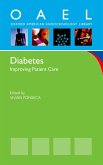At a time of dramatic increases in the prevalence of obesity, it is appropriate that Type 2 diabetes has received a great deal of attention by the endocrinology community. Clearly, the management of insulin resistance and cardiovascular risk is a critical issue. However, it is important to also acknowledge and address Type 1 diabetes, whose prevalence is also increasing, and whose management remains complex. Currently it is estimated that 10-15% of those with diabetes carry the diagnosis of Type 1 diabetes, and frequently the diagnosis is not straightforward, as many clinicians recognize that more adults previously thought to have Type 2 diabetes actually have late-onset Type 1 diabetes (also termed latent autoimmune diabetes of the adult or LADA). Over the last decade tools for the management of Type 1 diabetes have also evolved; therefore, clinicians now have the opportunity to more closely replicate normal physiologic insulin secretion with either basal-bolus insulin therapy or continuous subcutaneous insulin infusions. While these advancements allow clinicians to manage patients with Type 1 diabetes better, they also add complexity to patient treatment. An updated text to address the concepts behind the recognition of new onset Type 1 diabetes in adults, the ongoing care of adults with established Type 1 diabetes, and future potential therapies and devices is warranted to review these issues for both endocrinologists and primary care providers with an interest in diabetes. As part of the Oxford American Endocrinology Library, this volume stands as a concise guide in the treatment of Type 1 Diabetes in adults. The authors briefly examine the classification and pathophysiology of Type 1 diabetes (including predication and prevention and LADA) and address management (blood glucose monitoring, insulin therapy, and Continuous Subcutaneous Insulin Infusion) and complications (Hyperglycemia, Retinocpathy, Nephropathy, Neuropathy, etc) of the disease. Finally and perhaps most significantly, the authors consider "special situations" associated with Type 1 Diabetes patients, including inpatient treatment, pancreas and inslet transplantation, and how to treat pregnant and depressed patients and patients with eating disorders.
Dieser Download kann aus rechtlichen Gründen nur mit Rechnungsadresse in A, B, BG, CY, CZ, D, DK, EW, E, FIN, F, GR, HR, H, IRL, I, LT, L, LR, M, NL, PL, P, R, S, SLO, SK ausgeliefert werden.









